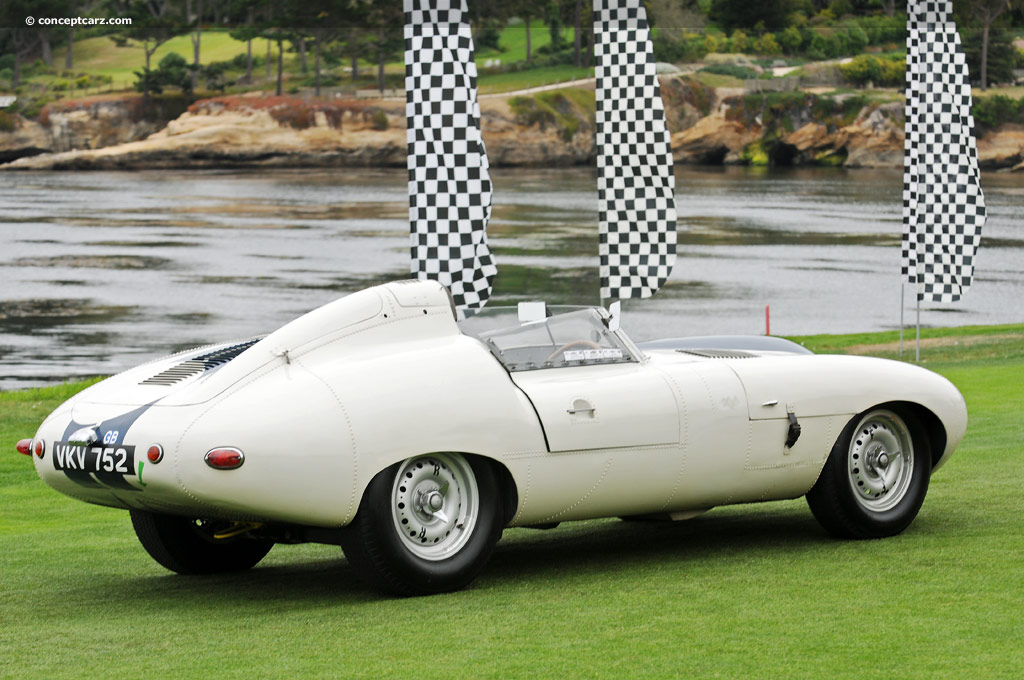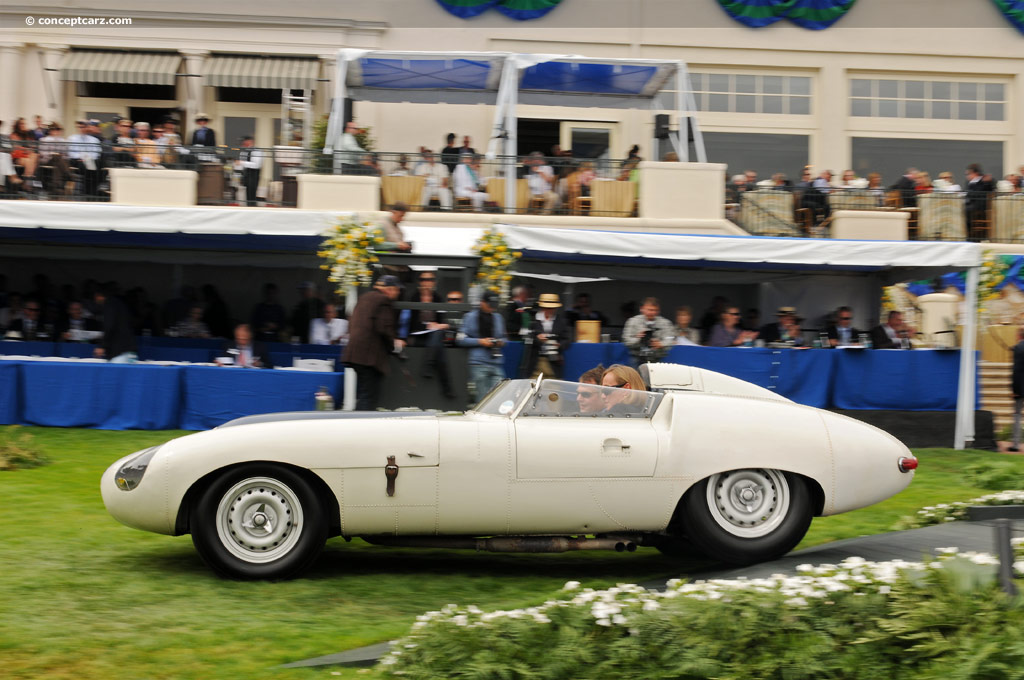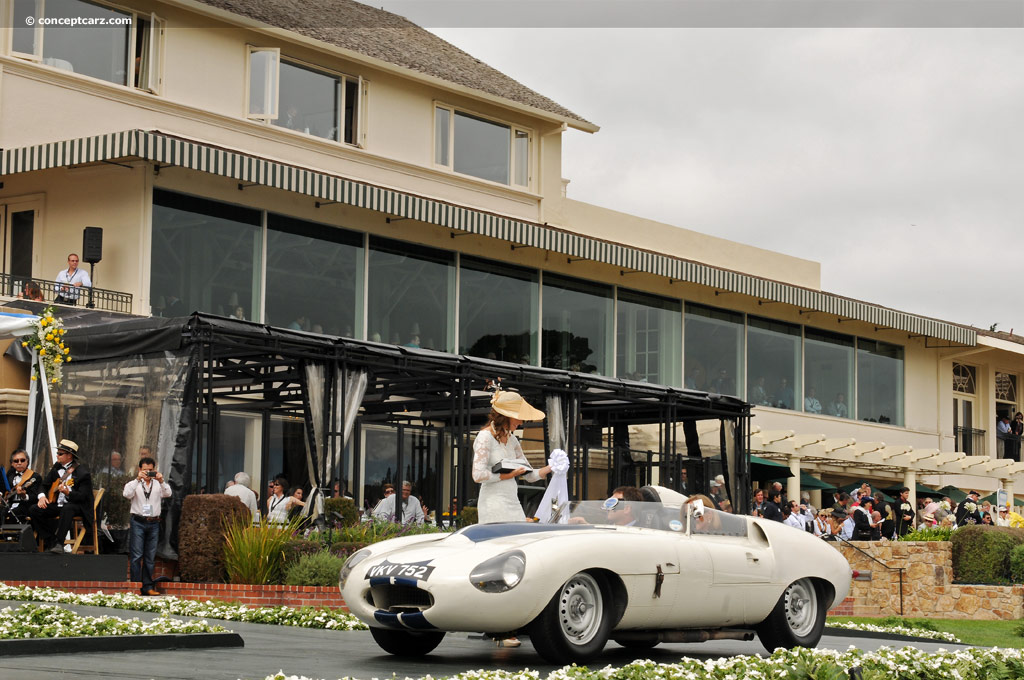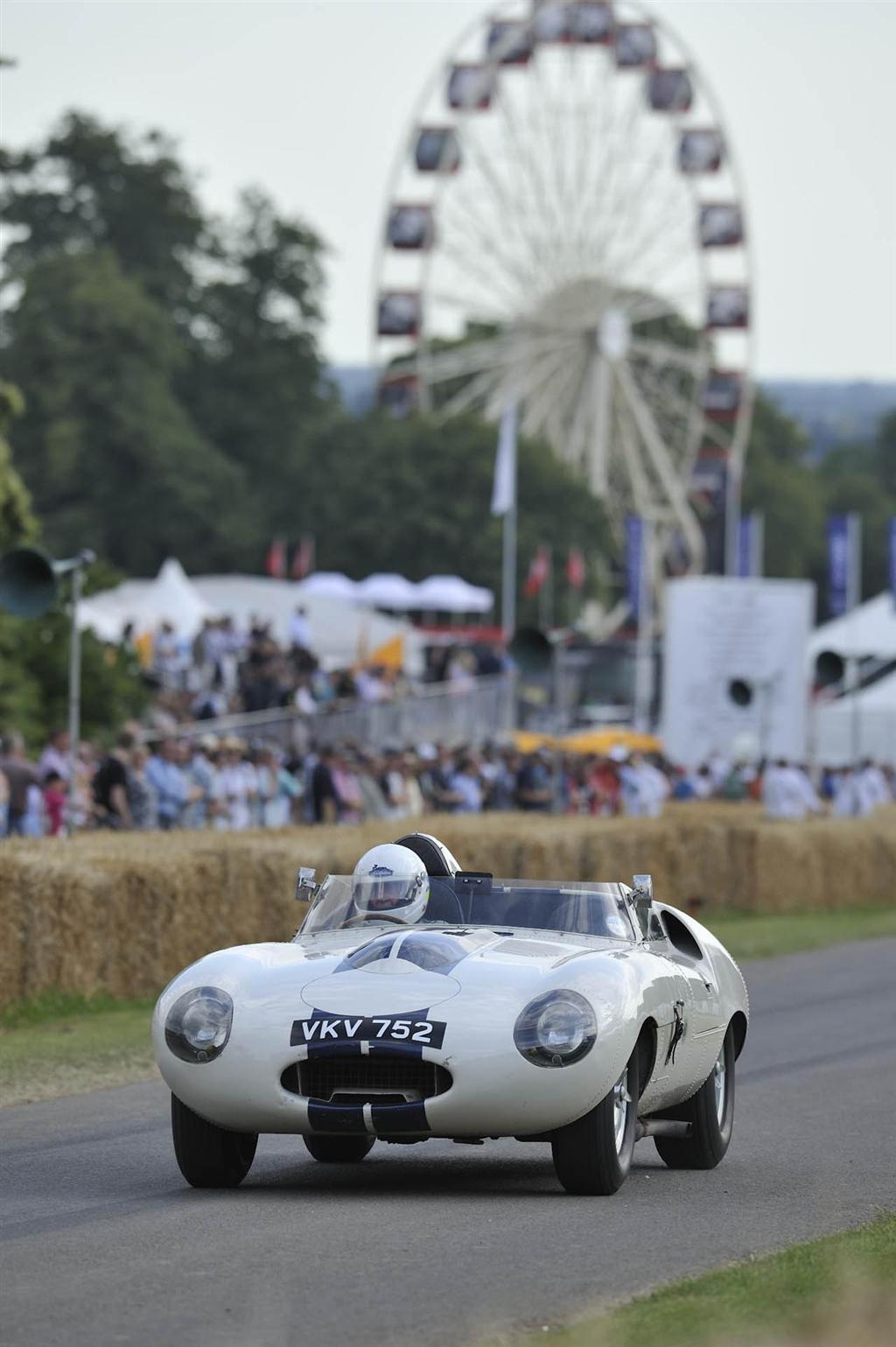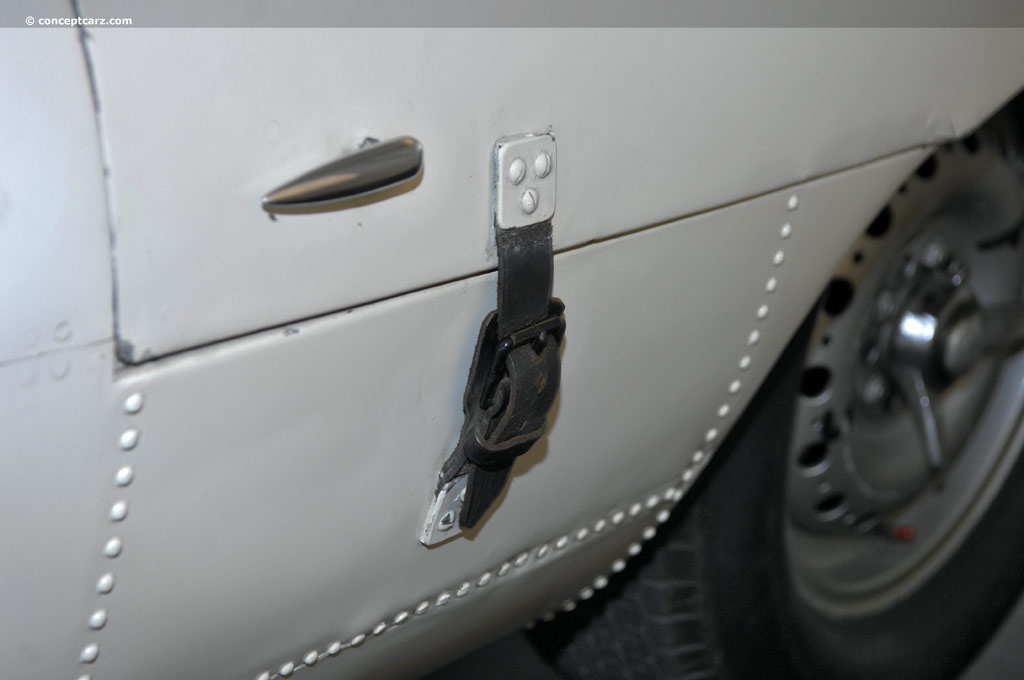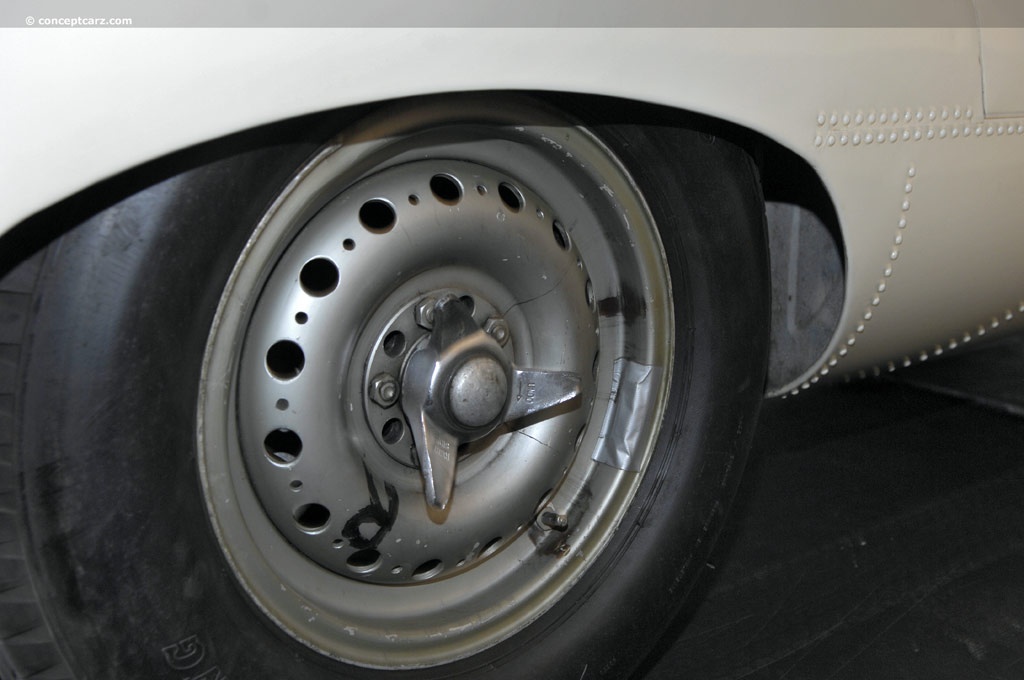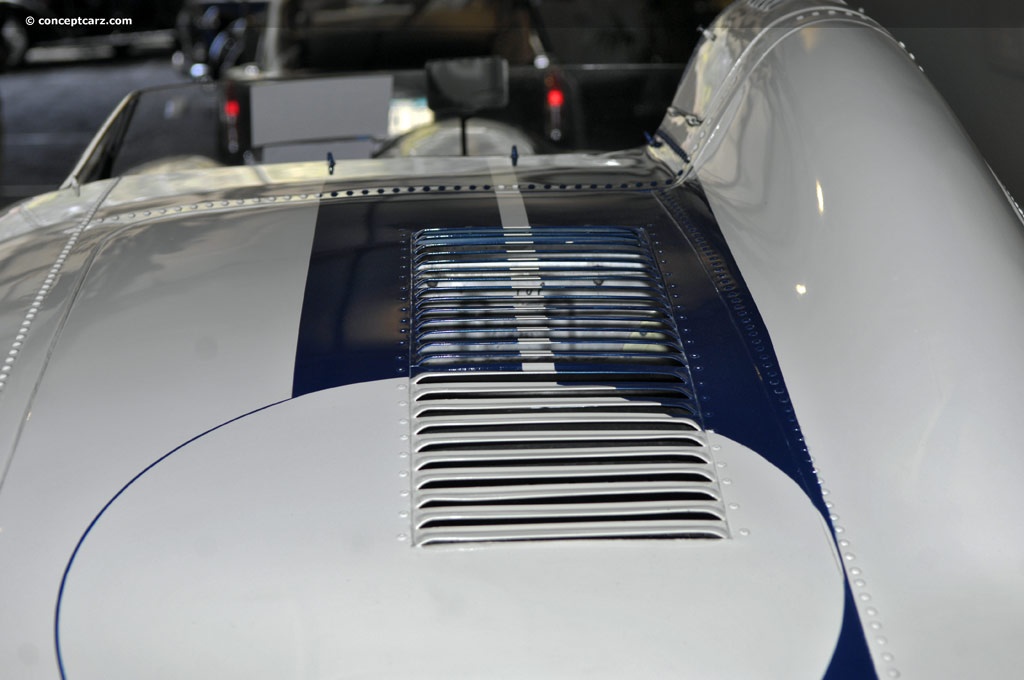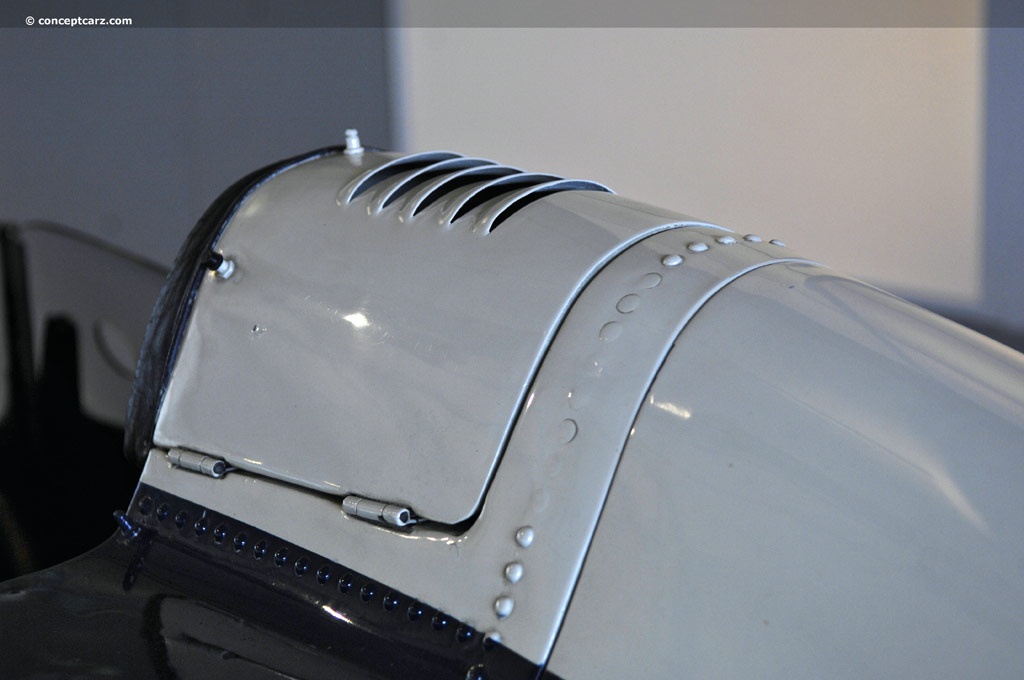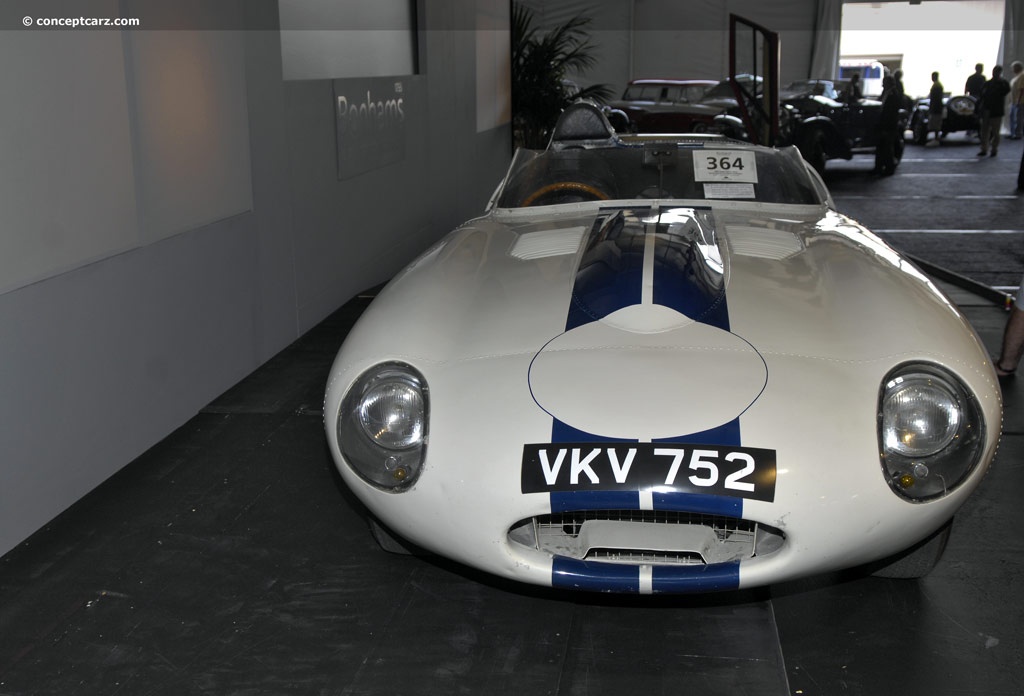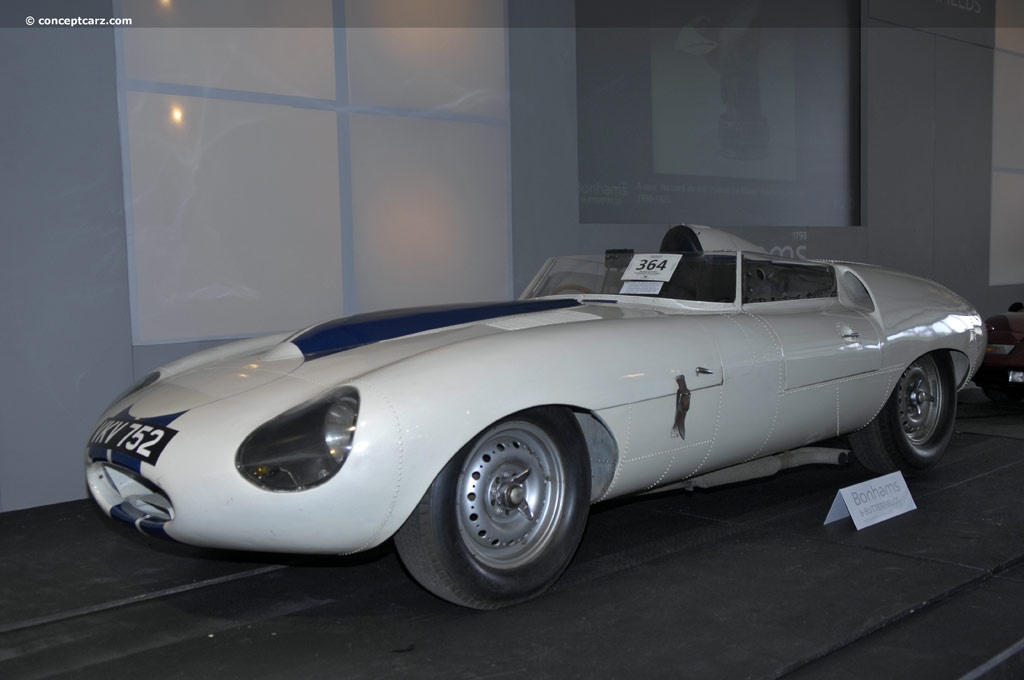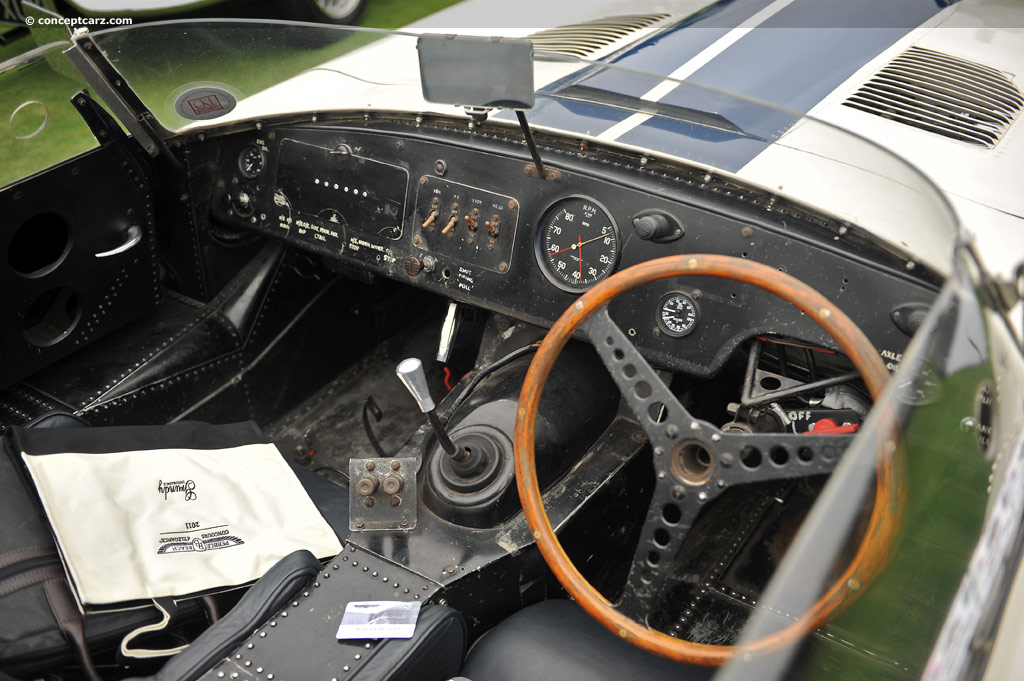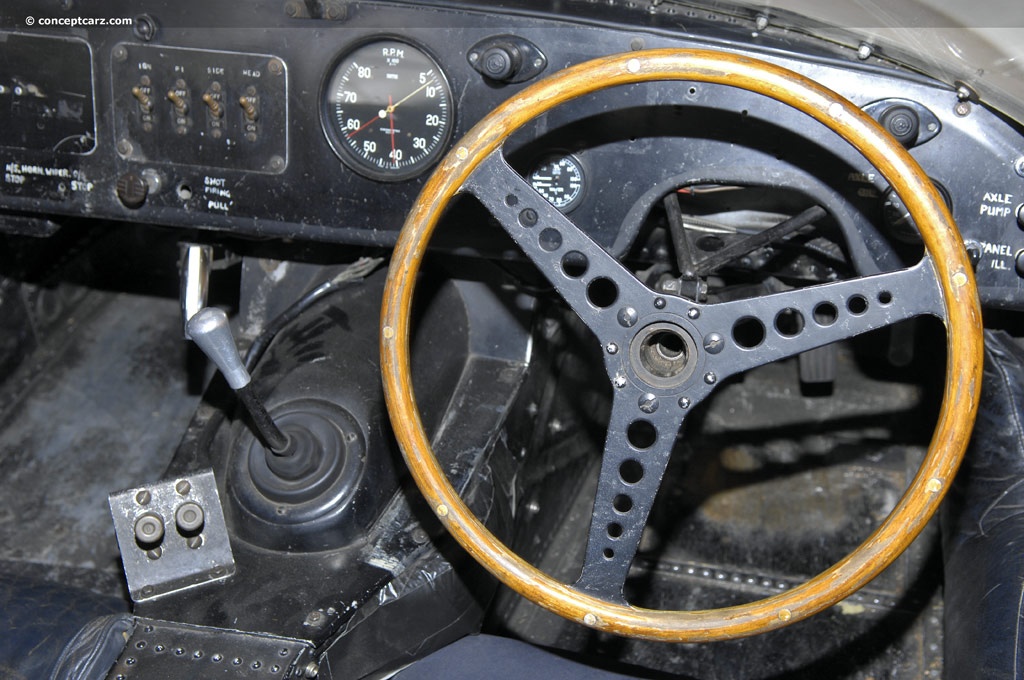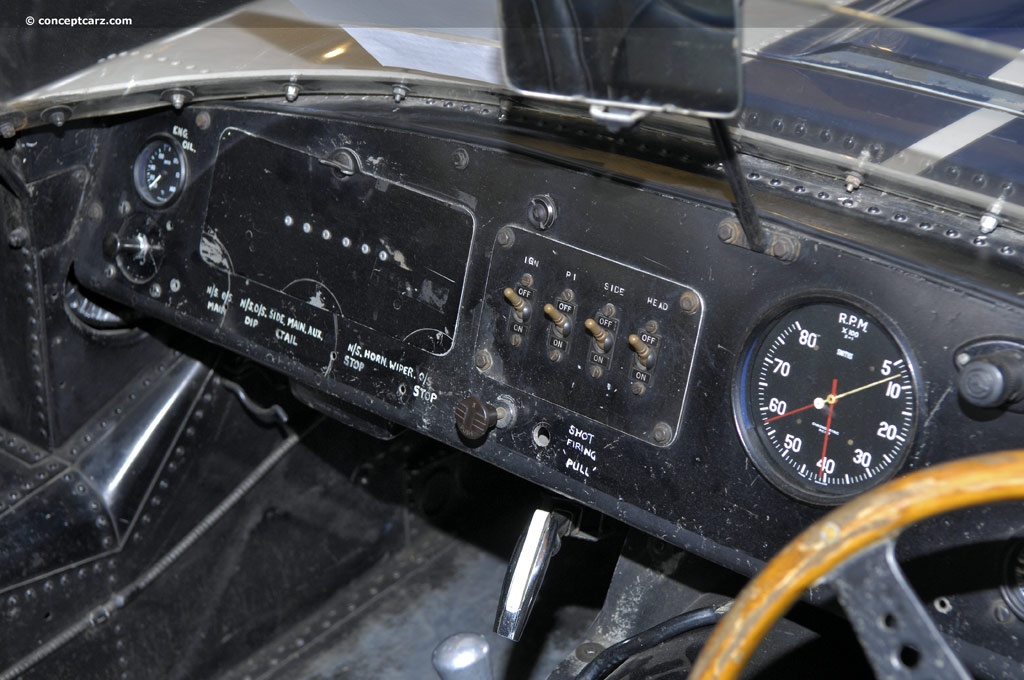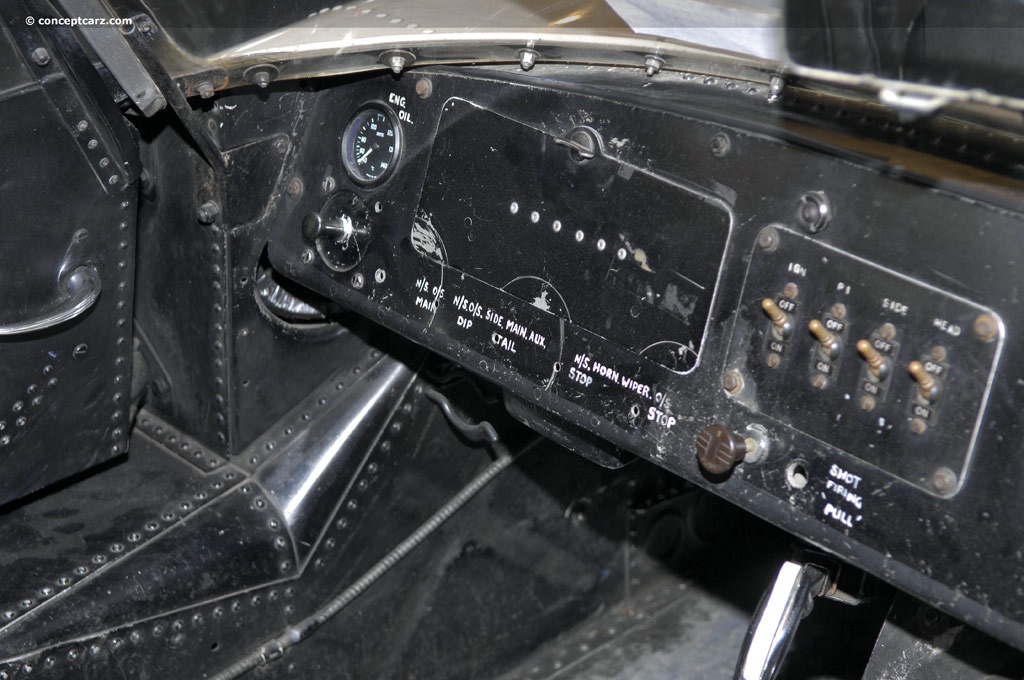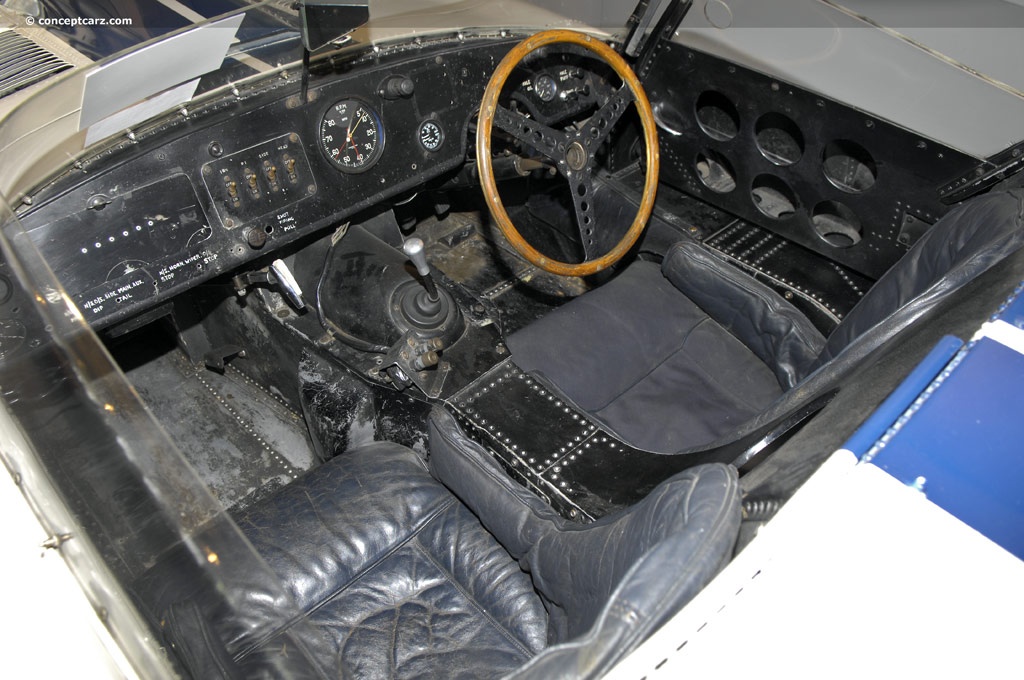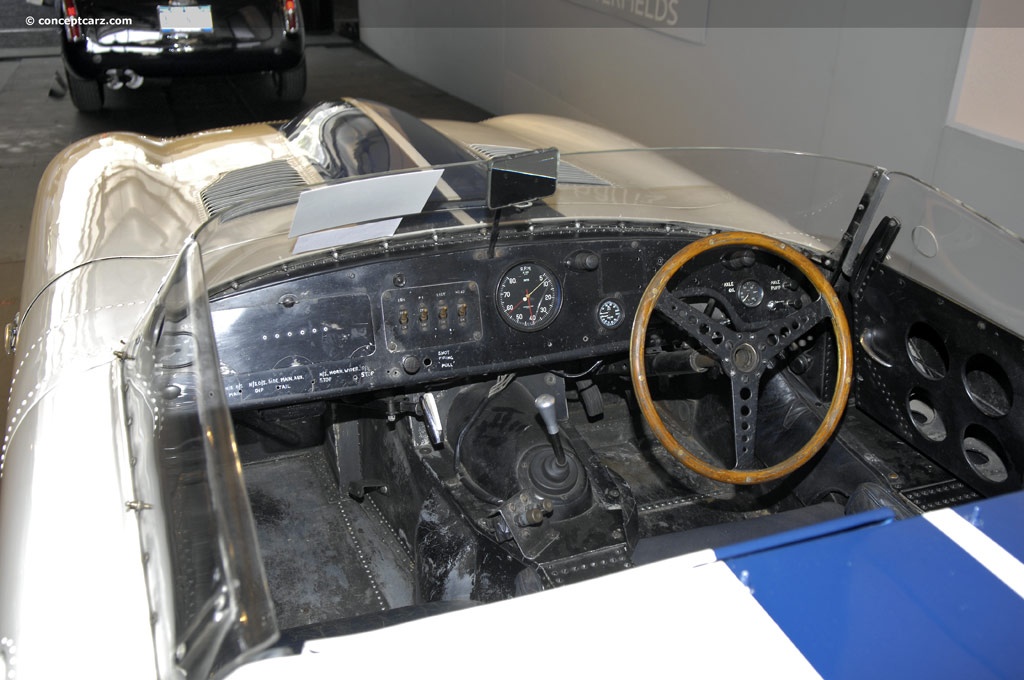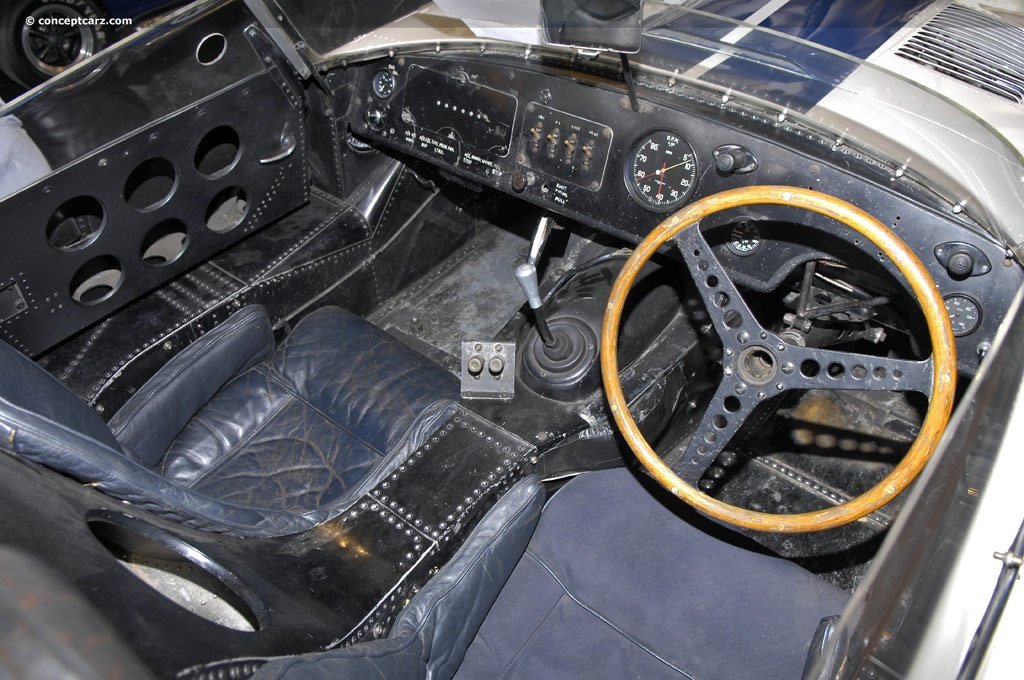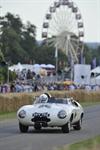Image credit: © conceptcarz.com (Reproduction Or reuse prohibited). Jaguar.
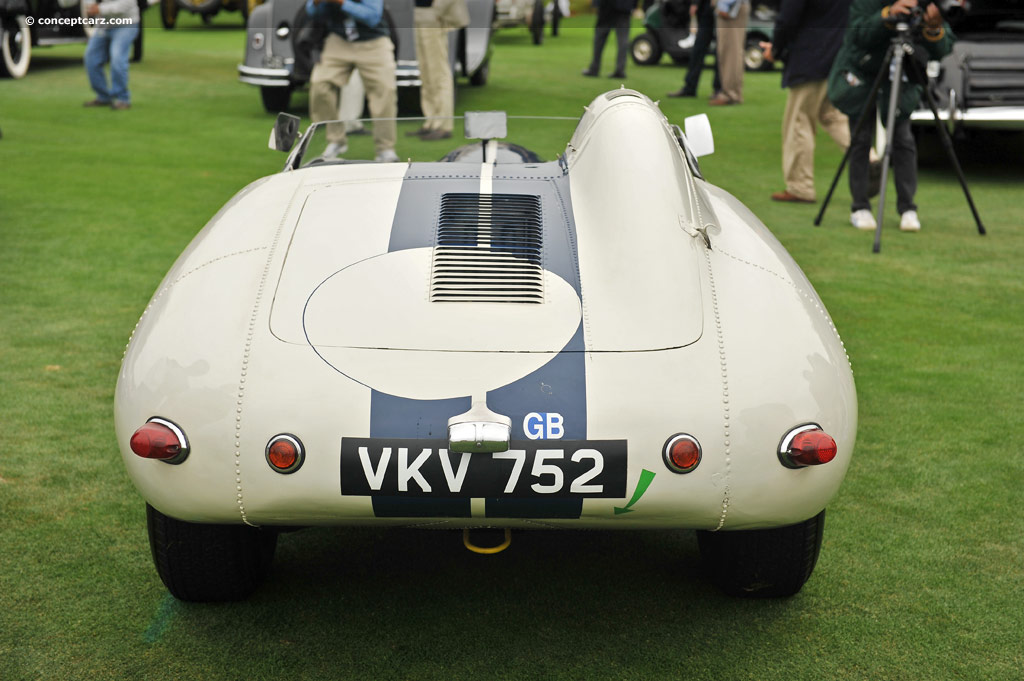
The 24 Hours of LeMans endurance sports car race has been held annually since 1923 in the town of LeMans, France. It is a race that tests reliability, stamina, speed, and determination. Jaguar had competed at this arena on many occasions, and by the 1960s had won top honors five times. Their gorgeous C-Type had won twice and the dynamic D-Type had won three times for the British company.
The factory team withdrew from racing at the close of the 1956 season. Within a six-year period, Jaguar had proven they were the best four out of six attempts. For 1957, a privateer added another victory to the D-Type's resume. By 1958, rule changes for racing were imposed which included a displacement limit of three liters. This immediately made the Jaguar D-Type unable to compete for the 1958 season. To qualify, several D-Types were given engines that complied with the new regulations, but the decrease in power failed to produce winning results for the legendary sports car.
With the factory team withdrawn from racing, the marque focused on turning their LeMans winning designs into road-going vehicles to serve as replacements for the XK series. The prototypes that followed borrowed heavily from the racing machines that had proven their worth on the race tracks. The first attempt was dubbed the E1A. It was similar to its racing sibling but given a fully independent rear suspension instead of the live-axle setup. Mounted under the long and flowing bonnet was a straight-six version from the XK-Series. It had an aluminum monocoque chassis that was lightweight and strong, but expensive. A realistic road-going version, it was decided, would be constructed from steel.
It took an additional three years to create the next prototype, dubbed E2A after its chassis number. By February of 1960, the experimental department at Brown's Lane, Coventry, had completed the car. This future 'E-Type' had an independent rear suspension, contemporary tail-finned rear bodywork similar to the D-Type, and a one-piece bodywork. Power was from an aluminum-block fuel-injected 3-liter six-cylinder engine. With the help of the Lucas fuel injection system, the engine produced nearly 300 horsepower. The aluminum body was painted in the Cunningham team racing colors of white with two parallel centerline stripes in dark blue.
E2A was entered in the 1960 LeMans 24 Hours race by the Cunningham Team. Its drivers were BRM Formula 1 team's ex-Ferrari star Dan Gurney and veteran multiple SCCA Champion Walt Hansgen. As the race began, E2A quickly proved it was fast, despite its heavy steel chassis. The car's attempts at glory were slowed when an injector pipe split. Repairs were made and the car returned to racing. The return was temporary; after six hours, E2A was retired from racing when its engine seized due to a failed head seal and burned piston.
After the race, E2A was given the D-Type 3.8-liter engine and sent to America for SCCA Competition. Its first North American race was at a minor event at Bridgehampton, Long Island. Fitted with narrow section Firestone tires, Walt Hansgen drove E2A to a convincing victory. Next on the racing schedule was the Road America '500' at Elkhart Lake road circuit in Wisconsin. The car was not the fastest in the race. Dick Thompson, in his General Motors String Ray, lapped E2A on lap number 30. The Sting Ray later spun due to failed brakes and it was sidelined for the day. A Maserati had also lapped E2A, but the Jaguar had been given an advantage. An additional gas tank had been fitted in the trunk behind the spare wheel. It was now able to carry 46 gallons and required fewer fuel stops than most other cars.
As the sun began to set, only a 3-liter Ferrari driven by Augie Pabst was ahead of E2A. Rain began to fall and accidents began occurring. The distance between the Ferrari and the Jaguar began to close, but as the checkered flag fell, it was the Ferrari as the victor. Just twenty-one seconds behind was E2A and with six gallons of fuel remaining.
The next race on E2A's schedule was at the Los Angeles Times Grand Prix at Riverside. The Cunningham team enlisted the services of the Formula 1 World Champion Jack Brabham. Battling the finely tuned and lightweight specials, Brabham brought E2A to the finish line in 10th place. In the next race, at the Laguna Seca Pacific Grand Prix, the Jaguar was given to Bruce McLaren to pilot. The car endured several small problems to finish in 12 place in one Heat and 17th in the other.
At the close of the season, E2A was sent back to the British Factory. The car's next task was to test the Dunlop Maxaret anti-lock braking system, or 'WSP' meaning 'Wheel Slide Protector.' This system could also be found on the 4WD Ferguson P99 Formula 1 car and the InterContinental single-seater.
The car was retired from racing and testing and a few months later, the production version of the E-Type was introduced at the Geneva Auto Show. E2A was put into storage. Several years later, its headrest fin was removed and it was painted in British Racing green paintwork. It was brought to the MIRA test track at Lindley where it did laps for no other purpose than to divert attention away from the XJ-13 mid-engined prototype.
After playing the role of a decoy, the duties of the Jaguar E2A were done. Orders were given to scrap the car - to cut it up and dispose of it. This would have been the car's fate had it not been for Roger Woodley. His wife, Penny Griffiths, along with her father Guy, had assembled a collection of important Jaguars. Roger persuaded 'Lofty' England, then CEO of Jaguar Cars Ltd., to sell the car. An agreement was reached which included a strict understanding that it was not to be used competitively. The car was repainted in its original Cunningham livery, engine removed, and sent to Roger. Later, a wide-angle head 3.8-liter engine with plate number 'E5028-10' was fitted. Later, a correct all-aluminum fuel-injection 3.0-liter engine (no. EE1309-10) was obtained.
The car remained in single ownership for over four decades. IN 2008, it was brought to the 'Quail Lodge, A Sale of Exceptional Motorcars and Automobilia' presented by Bonhams Auction. As would be expected, it was one of the highlights of the event. It is one of the most important Jaguars ever produced and it was piloted by four such all-time greats as Sir Jack Brabham, Bruce McLaren, Dan Gurney, and the SCCA's revered Walt Hansgen.
It was believed that bidding could plateau as high as $7 million for this magnificent car, but as the gavel fell for the third and final time, the lot had been sold for $4,957,000 inclusive of buyer's premium. Still a very impressive sale, E2A set a world record with the highest sale ever achieved by a Jaguar at auction.By Daniel Vaughan | Dec 2008
The factory team withdrew from racing at the close of the 1956 season. Within a six-year period, Jaguar had proven they were the best four out of six attempts. For 1957, a privateer added another victory to the D-Type's resume. By 1958, rule changes for racing were imposed which included a displacement limit of three liters. This immediately made the Jaguar D-Type unable to compete for the 1958 season. To qualify, several D-Types were given engines that complied with the new regulations, but the decrease in power failed to produce winning results for the legendary sports car.
With the factory team withdrawn from racing, the marque focused on turning their LeMans winning designs into road-going vehicles to serve as replacements for the XK series. The prototypes that followed borrowed heavily from the racing machines that had proven their worth on the race tracks. The first attempt was dubbed the E1A. It was similar to its racing sibling but given a fully independent rear suspension instead of the live-axle setup. Mounted under the long and flowing bonnet was a straight-six version from the XK-Series. It had an aluminum monocoque chassis that was lightweight and strong, but expensive. A realistic road-going version, it was decided, would be constructed from steel.
It took an additional three years to create the next prototype, dubbed E2A after its chassis number. By February of 1960, the experimental department at Brown's Lane, Coventry, had completed the car. This future 'E-Type' had an independent rear suspension, contemporary tail-finned rear bodywork similar to the D-Type, and a one-piece bodywork. Power was from an aluminum-block fuel-injected 3-liter six-cylinder engine. With the help of the Lucas fuel injection system, the engine produced nearly 300 horsepower. The aluminum body was painted in the Cunningham team racing colors of white with two parallel centerline stripes in dark blue.
E2A was entered in the 1960 LeMans 24 Hours race by the Cunningham Team. Its drivers were BRM Formula 1 team's ex-Ferrari star Dan Gurney and veteran multiple SCCA Champion Walt Hansgen. As the race began, E2A quickly proved it was fast, despite its heavy steel chassis. The car's attempts at glory were slowed when an injector pipe split. Repairs were made and the car returned to racing. The return was temporary; after six hours, E2A was retired from racing when its engine seized due to a failed head seal and burned piston.
After the race, E2A was given the D-Type 3.8-liter engine and sent to America for SCCA Competition. Its first North American race was at a minor event at Bridgehampton, Long Island. Fitted with narrow section Firestone tires, Walt Hansgen drove E2A to a convincing victory. Next on the racing schedule was the Road America '500' at Elkhart Lake road circuit in Wisconsin. The car was not the fastest in the race. Dick Thompson, in his General Motors String Ray, lapped E2A on lap number 30. The Sting Ray later spun due to failed brakes and it was sidelined for the day. A Maserati had also lapped E2A, but the Jaguar had been given an advantage. An additional gas tank had been fitted in the trunk behind the spare wheel. It was now able to carry 46 gallons and required fewer fuel stops than most other cars.
As the sun began to set, only a 3-liter Ferrari driven by Augie Pabst was ahead of E2A. Rain began to fall and accidents began occurring. The distance between the Ferrari and the Jaguar began to close, but as the checkered flag fell, it was the Ferrari as the victor. Just twenty-one seconds behind was E2A and with six gallons of fuel remaining.
The next race on E2A's schedule was at the Los Angeles Times Grand Prix at Riverside. The Cunningham team enlisted the services of the Formula 1 World Champion Jack Brabham. Battling the finely tuned and lightweight specials, Brabham brought E2A to the finish line in 10th place. In the next race, at the Laguna Seca Pacific Grand Prix, the Jaguar was given to Bruce McLaren to pilot. The car endured several small problems to finish in 12 place in one Heat and 17th in the other.
At the close of the season, E2A was sent back to the British Factory. The car's next task was to test the Dunlop Maxaret anti-lock braking system, or 'WSP' meaning 'Wheel Slide Protector.' This system could also be found on the 4WD Ferguson P99 Formula 1 car and the InterContinental single-seater.
The car was retired from racing and testing and a few months later, the production version of the E-Type was introduced at the Geneva Auto Show. E2A was put into storage. Several years later, its headrest fin was removed and it was painted in British Racing green paintwork. It was brought to the MIRA test track at Lindley where it did laps for no other purpose than to divert attention away from the XJ-13 mid-engined prototype.
After playing the role of a decoy, the duties of the Jaguar E2A were done. Orders were given to scrap the car - to cut it up and dispose of it. This would have been the car's fate had it not been for Roger Woodley. His wife, Penny Griffiths, along with her father Guy, had assembled a collection of important Jaguars. Roger persuaded 'Lofty' England, then CEO of Jaguar Cars Ltd., to sell the car. An agreement was reached which included a strict understanding that it was not to be used competitively. The car was repainted in its original Cunningham livery, engine removed, and sent to Roger. Later, a wide-angle head 3.8-liter engine with plate number 'E5028-10' was fitted. Later, a correct all-aluminum fuel-injection 3.0-liter engine (no. EE1309-10) was obtained.
The car remained in single ownership for over four decades. IN 2008, it was brought to the 'Quail Lodge, A Sale of Exceptional Motorcars and Automobilia' presented by Bonhams Auction. As would be expected, it was one of the highlights of the event. It is one of the most important Jaguars ever produced and it was piloted by four such all-time greats as Sir Jack Brabham, Bruce McLaren, Dan Gurney, and the SCCA's revered Walt Hansgen.
It was believed that bidding could plateau as high as $7 million for this magnificent car, but as the gavel fell for the third and final time, the lot had been sold for $4,957,000 inclusive of buyer's premium. Still a very impressive sale, E2A set a world record with the highest sale ever achieved by a Jaguar at auction.By Daniel Vaughan | Dec 2008
2008 Bonhams & Butterfields Sale of Exceptional Motorcars and Automobilia
Sale Price :
USD $4,957,000
Recent Sales of the Jaguar E2A
(Data based on Model Year 1960 sales)
| 1960 Jaguar E2A Sold for USD$4,957,000 2008 Bonhams & Butterfields Sale of Exceptional Motorcars and Automobilia |   |
Jaguar E2As That Failed To Sell At Auction
1960 Jaguar E2A's that have appeared at auction but did not sell.
| Vehicle | Chassis | Event | High Bid | Est. Low | Est. High |
|---|
Vehicles With Comparable Market Values
Similar sales to the $4,957,000 range.
| 1958 Ferrari 250 GT Tour de France Berlinetta Chassis#:0893 GT Sold for $5,200,000 2024 Gooding & Company : Pebble Beach |   |
| 1995 Ferrari 333 SP Evoluzione Chassis#:010 Sold for $5,120,000 2024 Gooding & Company : Pebble Beach | |
| 1959 Ferrari 250 GT Berlinetta 'Tour de France' Coachwork by Pininfarina/Scaglietti Chassis#:1401GT Sold for $5,105,187 2023 Bonhams : The Zoute Sale | |
| 1914 MERCER TYPE 35-J RACEABOUT Chassis#:1967 Sold for $4,790,000 2023 Gooding & Company : Pebble Beach |   |
| 1995 Ferrari F50 Chassis#:ZFFTA46B000103501 Sold for $5,065,000 2023 RM Sothebys : Amelia Island |   |
| 2010 McLaren-Mercedes MP4-25 Formula 1 Chassis#:25A-01 Sold for $4,730,000 2023 RM Sothebys : Sealed Bid | |
| 1912 Simplex 50HP 5 Passenger Torpedo Tourer Chassis#:834 Sold for $4,845,000 2023 Bonhams : Scottsdale Auction |   |
| 1955 Mercedes-Benz 300 SL Alloy Gullwing Chassis#:198.043.5500786 Sold for $5,010,000 2022 RM Sothebys : Monterey |   |
| 1995 Ferrari F50 Chassis#:ZFFTG46A7S0103291 Sold for $5,175,000 2022 Broad Arrow Auctions : Monterey Jet Center Auction | |
| 1968 Porsche 907 usine Chassis#:907-031 Sold for $4,849,023 2022 Artcurial : Retromobile | |
| 1958 Ferrari 250 GT Cabriolet Series I by Pinin Farina Chassis#:0849 GT Sold for $5,002,319 2021 RM Sothebys : The Guikas Collection | |
| 1934 MERCEDES-BENZ 500/540K (FACTORY UPGRADE) SPEZIAL ROADSTER Chassis#:105136 Sold for $4,900,000 2021 Bonhams : Amelia Island Auction | |
| 1937 Bugatti Type 57SC Tourer by Corsica Chassis#:57512 Sold for $4,735,000 2021 RM Sothebys : Arizona |   |
| 1931 Bugatti Type 55 Two-Seat Supersport Chassis#:55221 Sold for $5,045,740 2020 Bonhams : Les Grandes Marques du Monde au Grand Palais | |
| 1958 Ferrari 250 GT Tour de France Berlinetta Chassis#:0903 GT Sold for $5,100,000 2019 Gooding & Company : Pebble Beach |   |
| 1960 Porsche 718 RS 60 Werks Chassis#:718-044 Sold for $5,100,000 2019 RM Sothebys : Monterey |   |
| 1966 Serenissima Spyder Chassis#:005 Sold for $4,800,587 2019 Artcurial : Retroobile |   |
| 1955 Maserati A6GCS/53 Spider Chassis#:2110 Sold for $5,170,000 2018 Gooding & Company : Pebble Beach | |
| 1957 Porsche 550A Spyder Chassis#:550A-0116 Sold for $4,900,000 2018 RM Sothebys : Monterey |   |
| 1955 Ferrari 500 Mondial Series II Chassis#:0556 (0446) MD Sold for $5,005,000 2018 Gooding & Company : Pebble Beach |   |
1960 Jaguar E2A
• Additional valuation insight and sales data• History
• Specifications
• Image gallery
• Other Jaguar E2A model years
